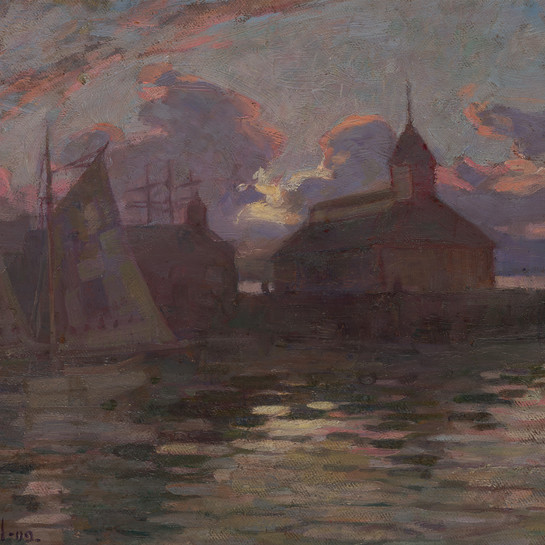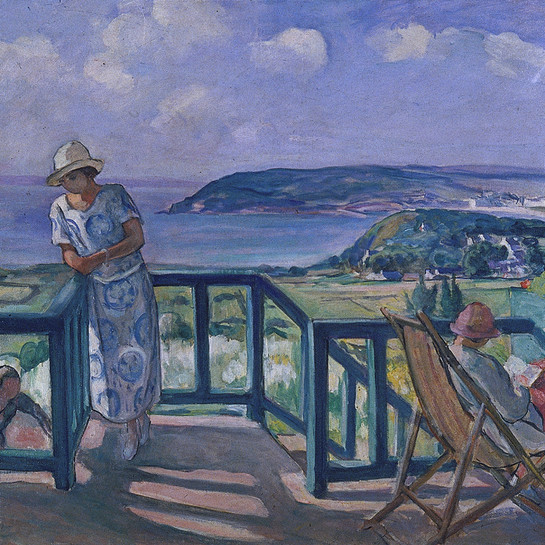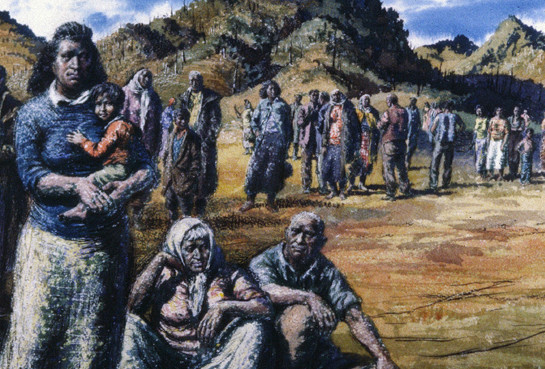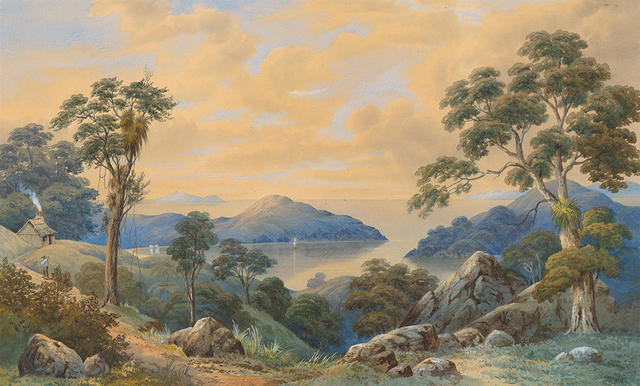John Barr Clark Hoyte
Aotearoa New Zealand / British, b.1835, d.1913
The Bay Of Islands
- Watercolour
- Presented by Mrs A E Haynes and Mr G N H Hill, Christchurch, 1975
- 705 x 990 x 40mm
- 76/33
- View on google maps
Tags: buildings (structures), clouds, cottages, hills, houses, landscapes (representations), natural landscapes, rock, seas, smoke (material), trees
John Hoyte was the drawing master at Auckland Grammar School and between 1871 and 1873 spent his holidays travelling round Auckland and the Bay of Islands. By the time he painted this work he had established himself as a significant New Zealand artist. The Bay of Islands is painted in the romantic realist style. Hoyte was particularly fond of using a strong lapis blue for his shadows and this characteristic shade can be seen in the shadows of the far peninsulas. Hoyte was born in Britain and received his art training there. From around 1855 he lived in the West Indies but left there for England and then New Zealand in 1860. Hoyte helped to organize the first exhibition of the Society of Artists in Auckland in 1871. He moved to Dunedin in 1876 to paint full-time but left there three years later for Australia. Hoyte was the first president of the Art Society of New South Wales.
Exhibition History
During January of 1871, 1872, and 1873 Hoyte went on sketching tours of Rotorua, Thames, Coromandel, Whangarei, and the Bay of Islands. It is thought that as he was in Canterbury by 1874 and then further south in Dunedin, that this work must date from 1873. Like many of his contemporaries Hoyte was a studio artist who often developed sketches made several years earlier, painting many variations on an idea. He had trained as an artist in England and had spent the 1850s in the West Indies before coming to New Zealand.
In 1869 he was appointed drawing master at Auckland Grammar School and was only able to make his sketching excursions during vacations. He became well-known for his calm views of the places he visited, though often they were topographically inaccurate. As an artist his work has a place with the group termed the Romantic Realists. By 1879 Hoyte had left New Zealand for Sydney, where he continued to paint New Zealand subjects for several years after his departure.
This work was first exhibited at Mr Nenderhausen’s premises, Princess Street, Dunedin, in 1876.



